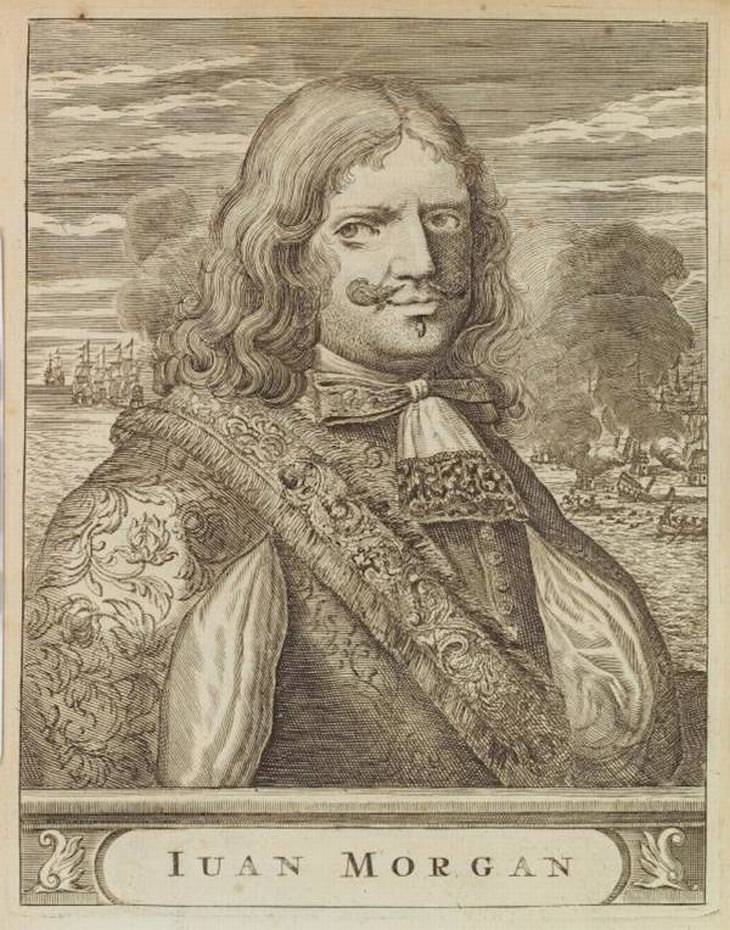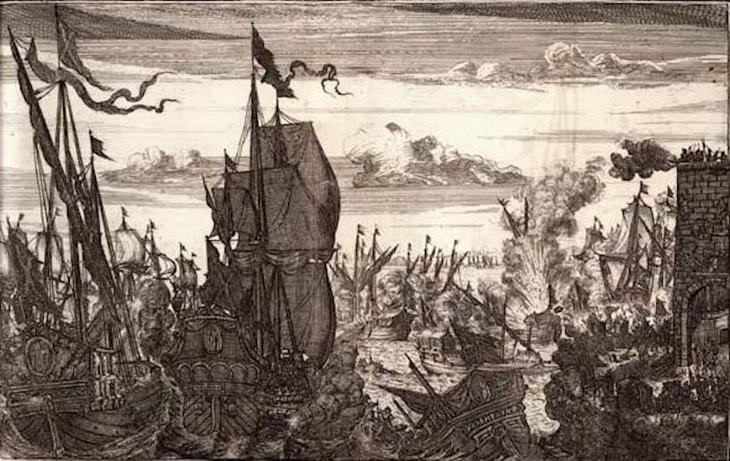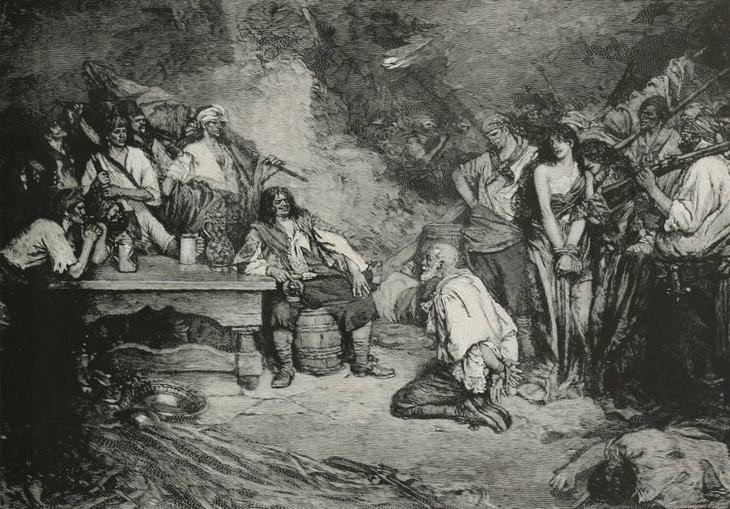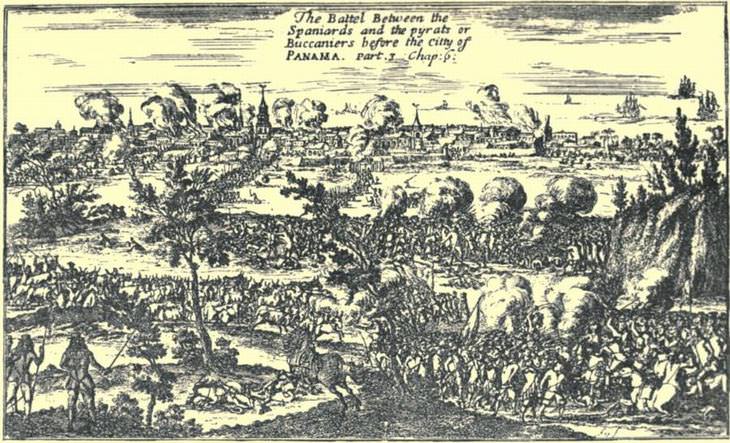

Henry Morgan
Born in Wales, sometime around 1635, very little is known about Morgan's early life. What is known, however, is that he found his way to the Caribbean in the early 1650s. While there is no definite answer for how he got there, it is believed that he may have been a soldier in an English expedition against the Spanish forces in the area.
Regardless of how he got there, Morgan arrived in the Caribbean at the perfect time to begin his life as a pirate. In the 1650s, for about 30 years, this time was considered to be the Golden Age of Piracy in the Caribbean. So much so that it attracted men from all over Western Europe to try their hand at buccaneering. Morgan was no exception.
By the 1660s, Morgan had found a place in a fleet of privateers led by Captain Christopher Myng. Together the pair cut a swath of bloody terror across the Spanish Caribbean. They sacked Santiago de Cuba, taking away the city's valuables. They then amassed a fleet of 14 ships and 1,400 men and raided the heavily fortified city of Campeche in the Yucatan Peninsula.

Morgan attacking a Spanish fleet near Venezuela
With all the raids, Henry Morgan made enough cash to purchase a plantation in Jamaica in 1665. Now that he had his own ship, he decided to strike out on his own. In 1667, Governor of Jamaica Sir Thomas Modyford issued Morgan a letter of marque, authorizing him to attack Spanish shipping. Upon doing so, the year after, Morgan was promoted to admiral and was given a fleet of ten ships.
In the letter of marque though, Morgan was given permission to attack the Spanish ships, but not Spanish cities. And any attacks made on land would be considered an act of piracy. Of course, this didn't stop Morgan. He knew where the money was, and as one would expect of a buccaneer, he didn't spend much time worrying about the distinction between what was and wasn't considered to be piracy.
A number of Spanish cities in the Caribbean were raided at the hands of Morgan, who then reported to the governor that they had also been organizing attacks on Jamaica. While this was probably not true, it did provide a nice legal cover for the attacks. However, the loot from these raids wasn't as impressive as Morgan had hoped. Instead, he made plans to raid Porto Bello, one of the richest cities in the Spanish Caribbean.

Morgan at Porto Bello
As the city was wealthy, it was heavily defended. Two castles overlooked the harbor with another in the center of town, all having cannons. The odds of taking the city were slim, even with a fleet. So, rather than order a full-on attack, Morgan anchored outside the city in the early hours of the morning. His men then snuck ashore in canoes, capturing the castles before anyone inside the city even knew what was happening.
This plan resulted in Morgan capturing one of the greatest fortresses in the Caribbean while losing just 18 men. Morgan then proposed a deal. He would ransom the city back to the Spanish for 100,000 pesos. As the Spanish were out of options, they agreed.
He then sailed back to Jamaica with more money than the country itself had made in a year from all of its plantations combined. While the raid was completely illegal, Morgan was hailed a national hero in Britain.

Morgan attacking Panama City
Morgan then spent the next two years attacking Spanish colonies and fleets near Venezuela. In 1670, he began organizing an attack on Panama City, but by then, the Spanish had received word of Morgan's plan. Consequently, they began organizing a defense of the city with the governor declaring that he would burn the city to the ground before he saw it fall into the hands of Morgan.
Nevertheless, Morgan trekked through the jungle fighting off a number of Spanish ambushes. The pirates had met a Spanish army of 1,600 men outside the walls of Panama City. Morgan routed the Spanish, killing 400 men, while only losing 15 of his in the process. At this point, there was nothing stopping him from looting one of the richest cities in the Spanish colonies.
True to his word, the governor ordered the city's powder stores to be set alight causing massive explosion across the city, setting it ablaze. The fire burned for two days, destroying most of the city's wealth. Still, Morgan had managed to pull around 300,000 pesos worth of booty from the ruins - though with a large army demanding payment, that money didn't go far.

The ruins of Panama City
In the mean time, events in Europe were bringing an end to the age of piracy putting Morgan's reputation as a hero to the test. Furthermore, the Spanish and the English had signed a peace treaty a few weeks before the attack on Panama - though Morgan was unaware. As expected, Morgan's raid on the city risked restarting the war. So, to reassure the Spanish, King Charles II ordered Morgan and Sir Modyford arrested and brought to London.
Luckily for Morgan, his exploits against the Spanish made him a legend among the common people of Britain. So, rather than risk their wrath, King Charles II released Morgan, knighted him and sent him back to Jamaica as deputy to the new governor.
Though life as a politician was not something that Morgan enjoyed, resulting in him drinking heavily. It was also discovered that he had been investing in pirating expeditions which led to him being sacked from his position. He spent the rest of his days drinking and gambling. He finally died of complications from alcoholism, making him an interesting choice as the official mascot for an alcoholic beverage company.
Related Articles:
History of 1299: The Mongol Invasion of India